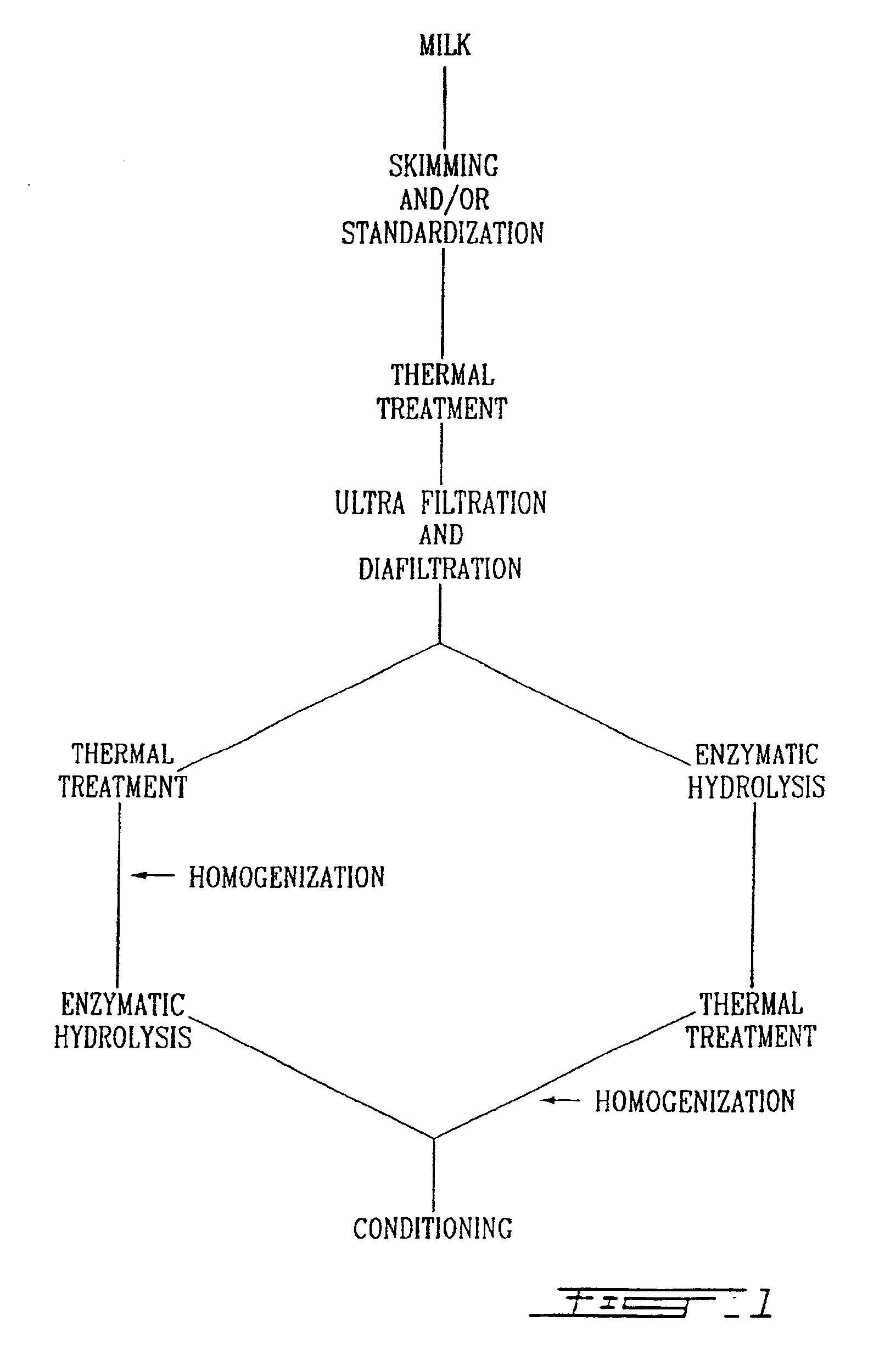Process for making a lactose-free milk and milk so processed
a technology of lactose-free milk and processing process, which is applied in the field of processing process for making lactose-free milk and milk so processed, can solve the problems of not providing solutions to solve the problem, and the production of monosaccharides increases the taste of milk to an unacceptably sweet level
- Summary
- Abstract
- Description
- Claims
- Application Information
AI Technical Summary
Benefits of technology
Problems solved by technology
Method used
Image
Examples
example 1
Process for Making a Lactose-free Milk
[0030]The steps of the process of this invention will now be described with reference to FIG. 1.
[0031]The first step is a partial or total removal of fatty matter, or standardization, of the milk contents. Levels of fatty matter usually vary from 0 to 3.25% on a dry weight basis.
[0032]The second step of the present process is usually a thermal treatment. The goal of this step is two-fold: (1) to destroy pathogenic agents in the milk; and (2) to increase the permeation speed during the following ultrafiltration step, thereby reducing the clogging rate of the filtering walls.
[0033]Thermal treatment is not essential to the present invention if one or both of the above goals are not sought. In the present case, standardized milk having 3.25% fatty matter was heated at 72.8° C. for a period of 16 seconds. The pressure used for the heat treatment may vary upon the nature of the equipment and the method itself. Here, the equipment used was a Tetra Pak™...
example 2
Evaluation of Organoleptic Properties of the Milk Product Made Following the Procedure of Example 1
[0043]The organoleptic properties of the milk produced by the process of Example 1 were evaluated using a taste test. Individuals who tasted the milk did not discern an unpleasant taste.
example 3
Improvement of the Organoleptic Properties of a Fat-free, Lactose-free Milk
[0044]The steps of Example 1 were reproduced starting with an original milk having a fatty matter standardized to about 0%. The watery and sweet taste of the skimmed milk so-treated may be greatly improved by increasing the concentration of protein from about 3% (i.e., 3.1 to 3.3%) to about 3.8-4.0% or greater. This increase was achieved during the ultrafiltration / diafiltration step performed on the original milk (i.e., by concentrating milk proteins). Alternatively, proteins may be added at any step, such as after diafiltration or after complete hydrolysis of lactose. This simple increase in proteins rendered the fat-free and lactose-free milk significantly more acceptable to consumers involved in taste trials.
PUM
 Login to View More
Login to View More Abstract
Description
Claims
Application Information
 Login to View More
Login to View More - R&D
- Intellectual Property
- Life Sciences
- Materials
- Tech Scout
- Unparalleled Data Quality
- Higher Quality Content
- 60% Fewer Hallucinations
Browse by: Latest US Patents, China's latest patents, Technical Efficacy Thesaurus, Application Domain, Technology Topic, Popular Technical Reports.
© 2025 PatSnap. All rights reserved.Legal|Privacy policy|Modern Slavery Act Transparency Statement|Sitemap|About US| Contact US: help@patsnap.com

